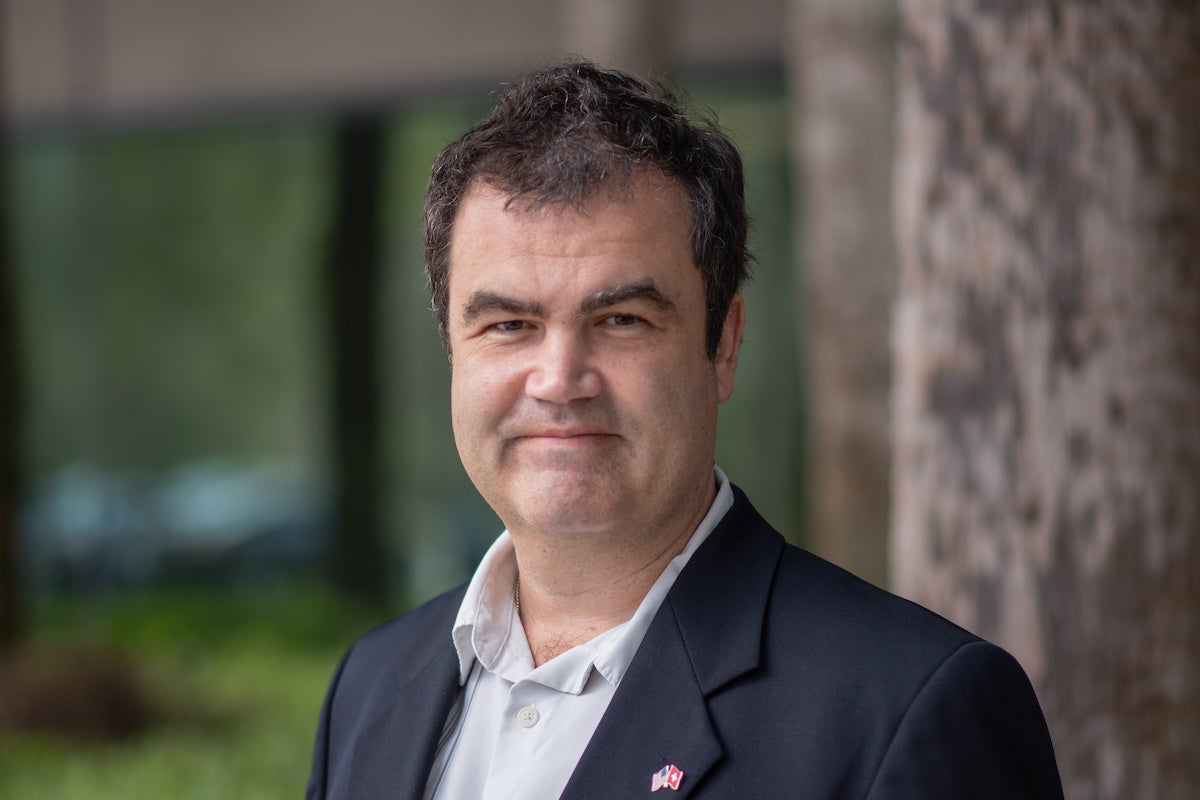The four-year project is a collaboration between the laboratory of Michael Leuenberger at UCF and the laboratory of Dirk R. Englund ˙at Massachusetts Institute of Technology (MIT). It’s funded by a $1.1 million-dollar grant from the Defense Advanced Research Projects Agency (DARPA).
“The goggles that currently exist in the field are too heavy and bulky,” says Leuenberger. “We’re proposing technology that will negate this issue, while simultaneously advancing what currently exists in the realm of night vision technology.”
Night vision technology has evolved considerably since its conception during World War II, when infrared searchlights were so heavy soldiers mounted them on flatbed trucks.
Leuenberger notes that despite the fact night vision technology is now accessible in the form of wearable headgear, the issue of injury and lack of mobility is still present.
Today’s night vision optics weigh about 2 pounds, often leading to chronic spinal strain and limited mobility for wearers.
According to a 2016 study published in the journal of Aerospace Medicine and Human Performance, scientists found that night-vision gear worn by U.S. Air Force pilots leads to chronic stress of the neck vertebrae, especially under the pressure of high-Gs flight maneuvers.
The envisioned night-vision glasses will change current night-vision technology in three main areas: The weight will be close to sunglasses, allowing swift head movements; Night vision will be extended from just near-infrared (NIR) to all the infrared bands with wavelength selectivity, which means the classic night-vision green will expand to the full red-green-blue spectrum; The peripheral range of view will substantially widen.
Getting to a prototype will be a years-long process, and it starts with proof of concept. Leuenberger’s lab is responsible for the theoretical modeling and calculations that will serve as a blueprint for the glasses’ overarching design. Co-principal investigator (Co-PI) Englund and his group at MIT are collaborating with Leuenberger’s group on the theoretical modeling and are working on the experiments.
For several years Leuenberger has been applying his expertise in nonlinear optics to various projects. In particular, his work on four-wave mixing in semiconductor quantum wells and plasmonics is what he points to as his backbone for this project.
The first two years will focus heavily on the design and theoretical modeling that serve as a blueprint for the glasses. Leuenberger and his team will perform test calculations, such as ab-initio quantum materials computations and finite-difference time-domain simulations, which determine the overall structure of how the prototype will be built.
Leuenberger is an expert in the fields of nonlinear optics, theoretical condensed matter physics, computational multiscale modeling of electronic and optical properties of quantum materials, quantum information science, and quantum optics. Leuenberger was DARPA Young Investigator in 2008 and co-PI on 2018 DARPA WIRED project, for which he co-developed an ultrasensitive and ultrafast photodetector based on the photothermoelectric effect in nanopatterned graphene.
Englund is an expert in quantum materials, plasmonics, and quantum optics who has made significant contributions to quantum-limited sensing, optical machine learning accelerators, cavity spectroscopy, and large-scale photonic devices. Englund was a DARPA, AFOSR, and ACS Young Investigator, received the Presidential Early Career Award for Scientists and Engineers, the IBM Faculty Award, and the Alexander von Humboldt Foundation Research Fellowship.
“The experiences of working with nonlinear optics, quantum materials, quantum optics, and plasmonics gave me and Dirk the inspiration to develop new ideas for night vision technology,” says Leuenberger. “It is an honor to have these ideas selected by a prestigious program such as DARPA ENVision.”




